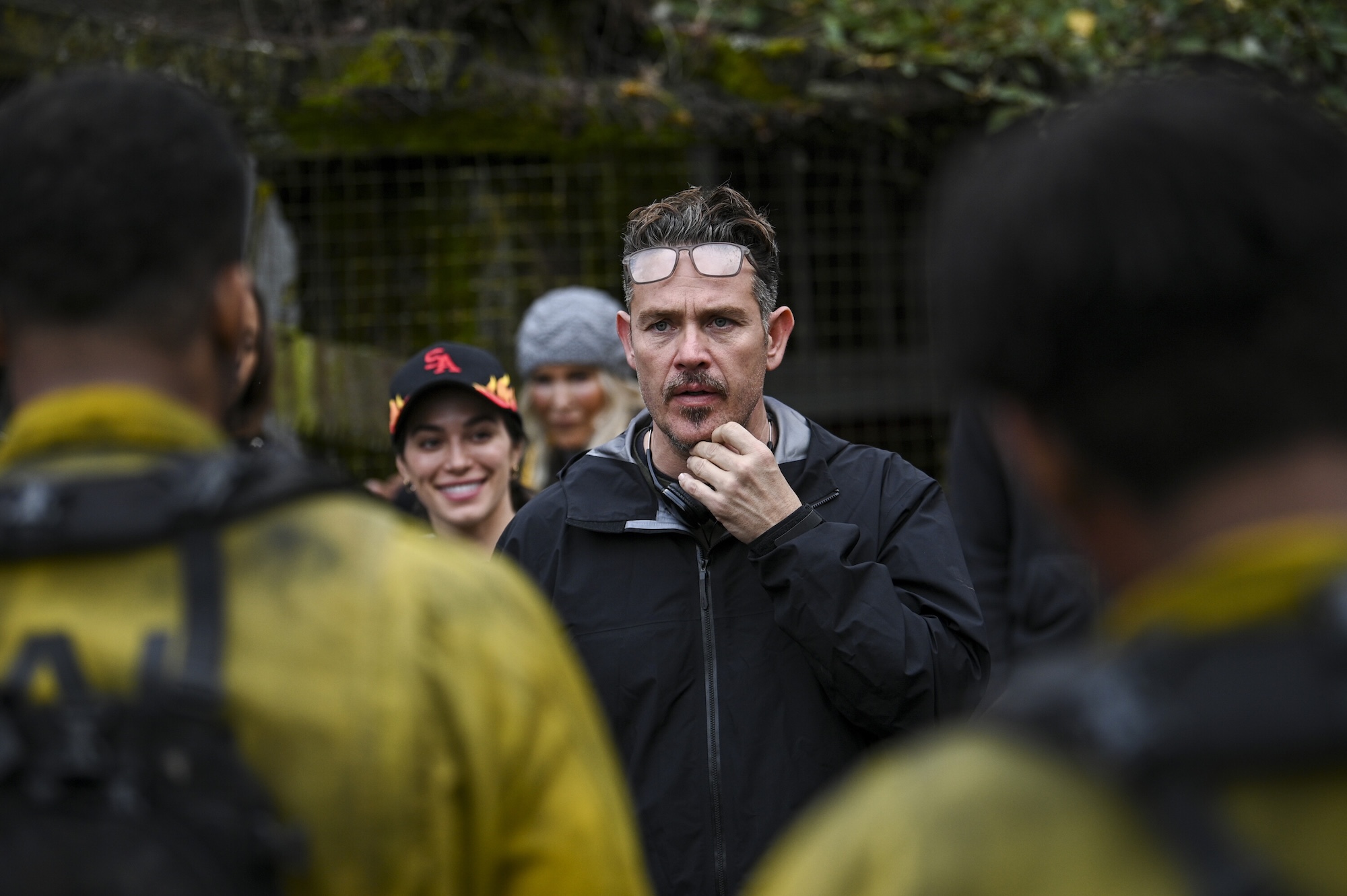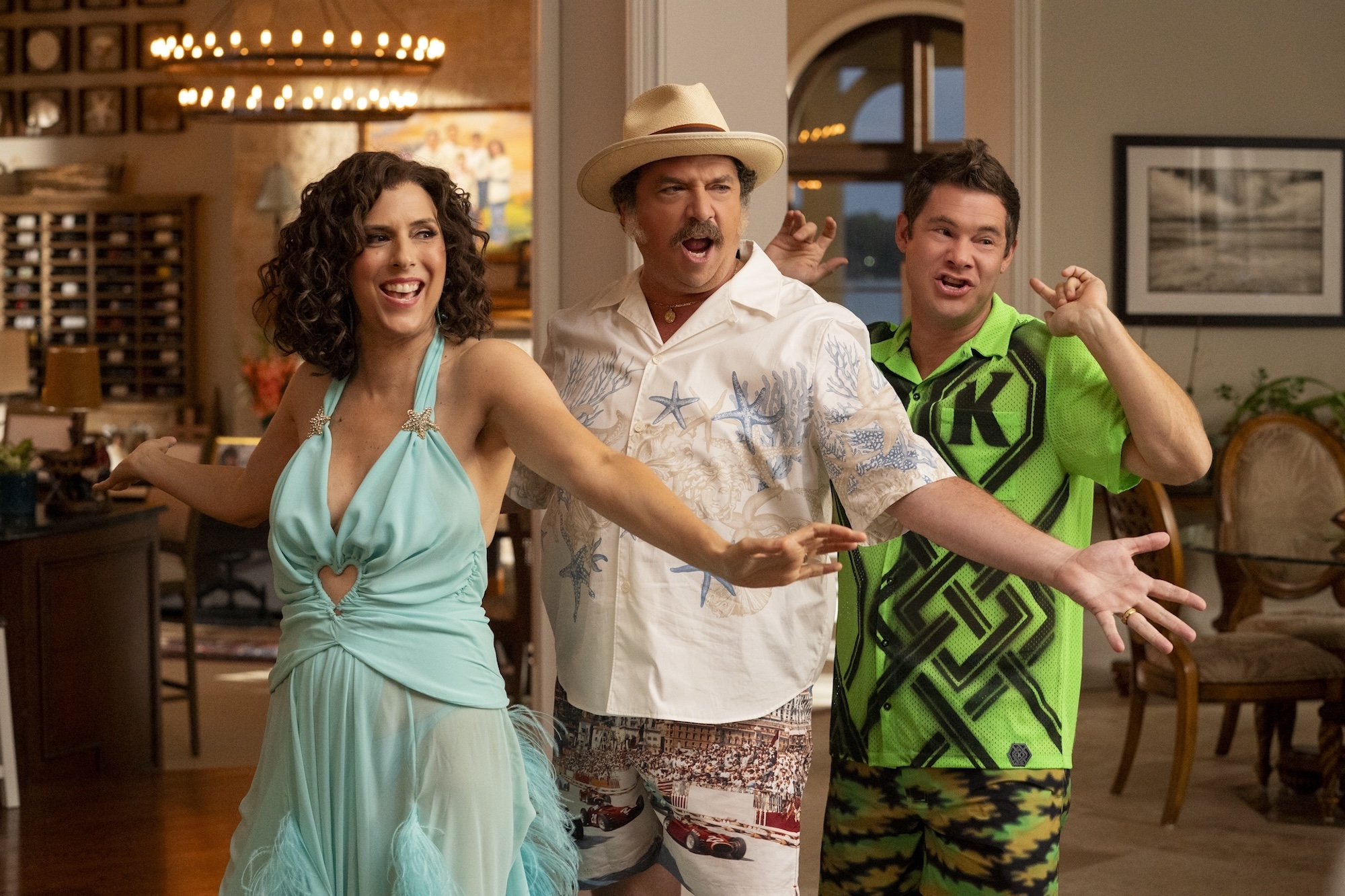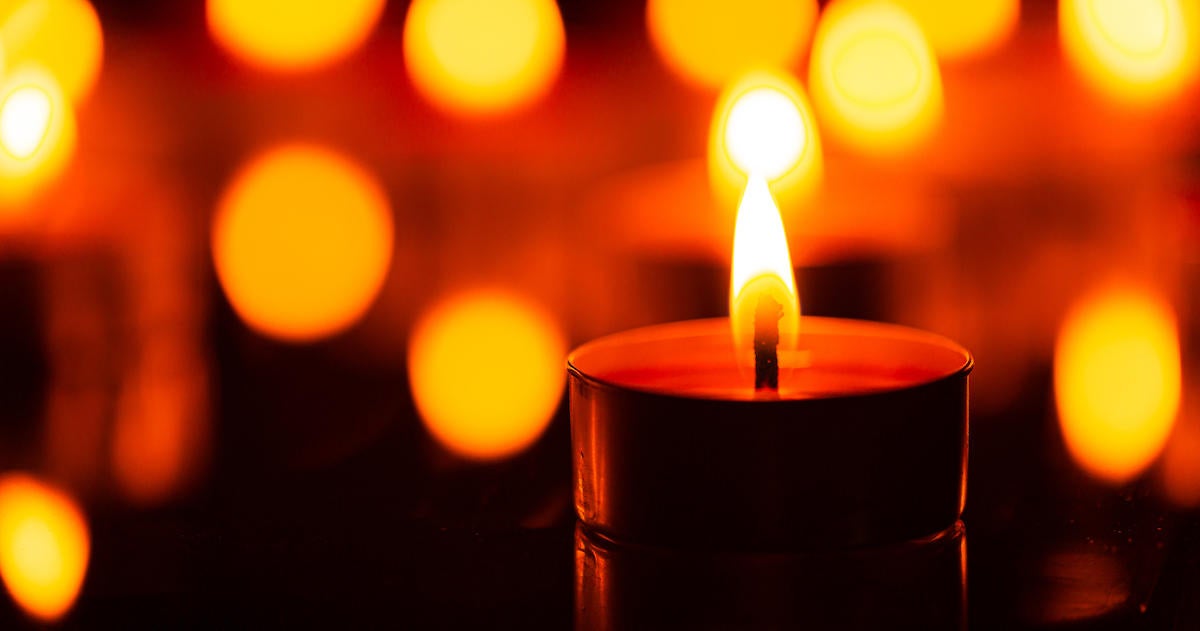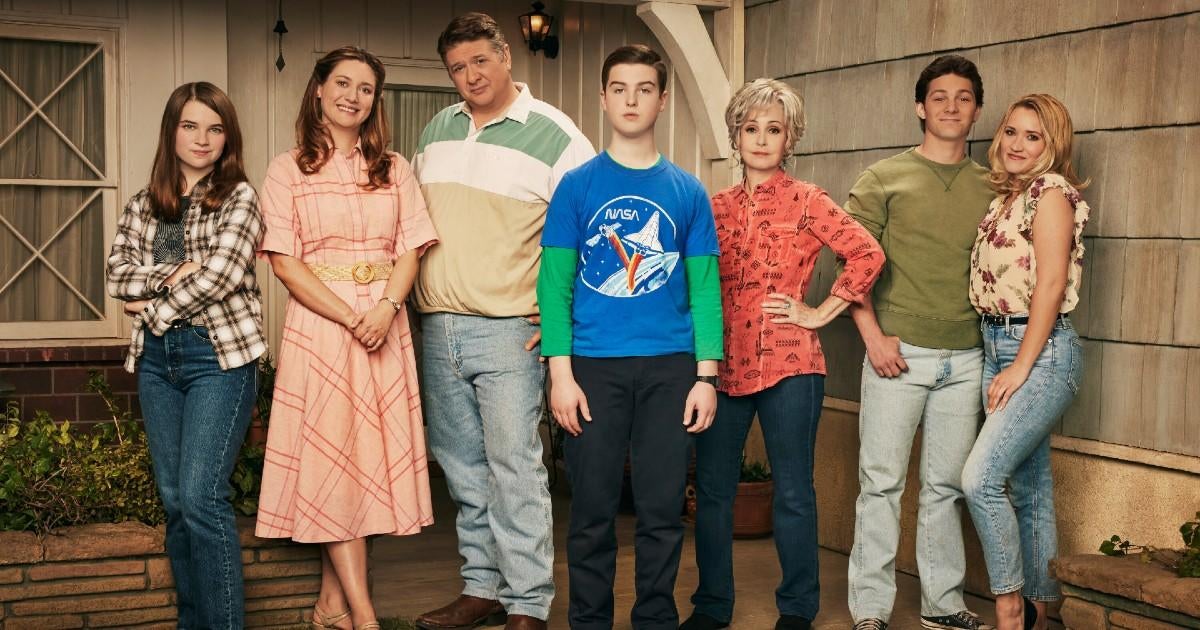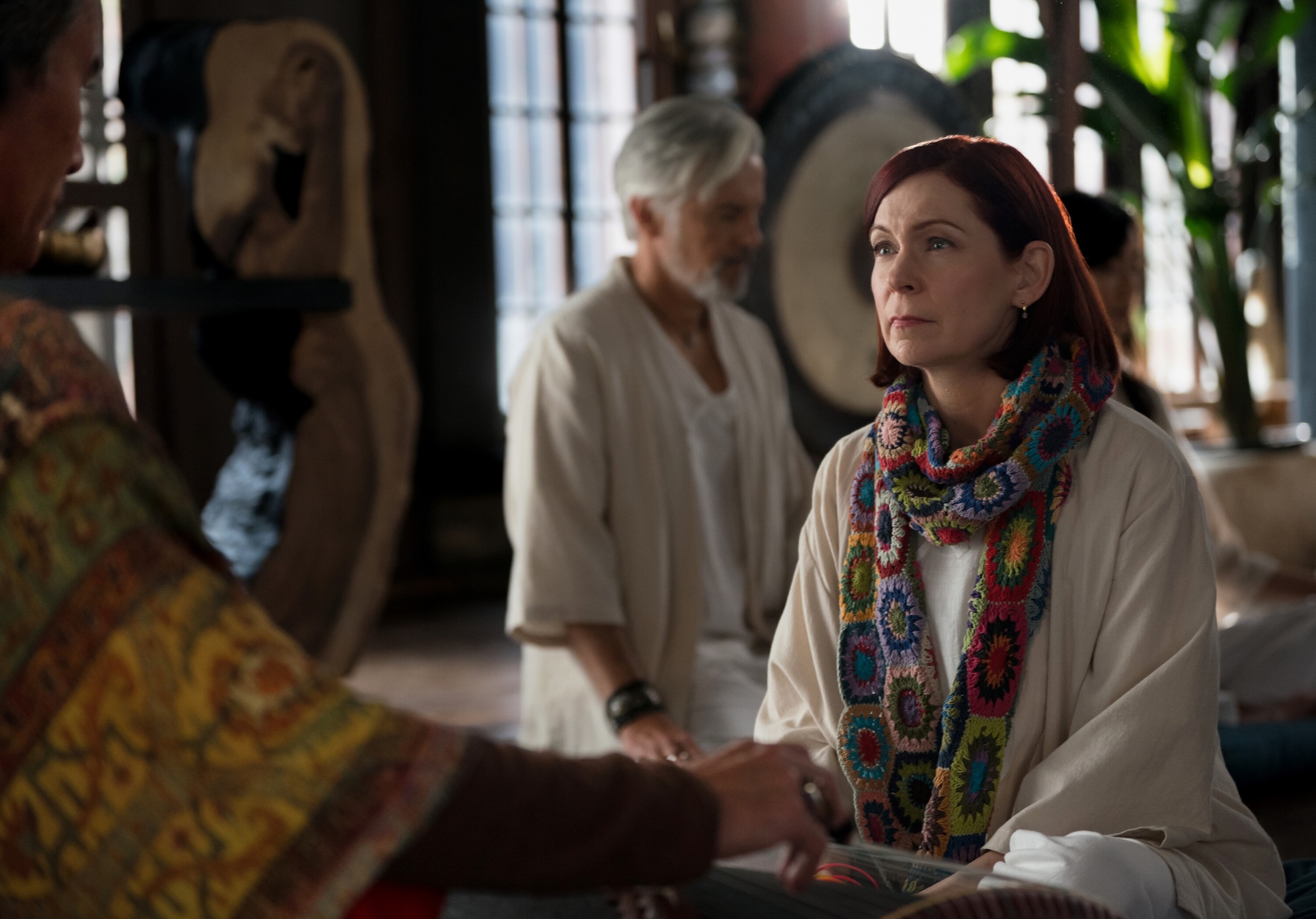‘House of the Dragon’ Season 2, Episode 6 Breakdown: Last Night I Had the Strangest (Weirwood) Dream
:no_upscale()/cdn.vox-cdn.com/uploads/chorus_asset/file/25530974/spoiler_warning_v2.2.jpg)
Vizzy T finally graced our screens again in Episode 6, but I don’t think we’ve seen the last of him. Daemon’s weeks of sulking around Harrenhal have him close to a breakthrough: He’s maybe one more hallucination away from some level of self-actualization. Let’s take a beat to break down his dreams—where they’re coming from, and what they might mean.
Deep Dive of the Week: The Power of Weirwood Dreams
When it comes to furniture on House of the Dragon, I sure didn’t expect a random bedframe in Harrenhal to get nearly as much attention as the Iron Throne. For the second time this season, someone mentions that the bed Daemon is sleeping in is made of weirwood. That’s no accident—there’s a reason the show is emphasizing something so mundane. And with Paddy Considine finally returning as King Viserys, it’s time for us to take a deeper look at Daemon’s dreams.
One of the fun quirks of George R.R. Martin’s world is that every religion in A Song of Ice and Fire appears to have real power (whether through true divinity or some association with magic), with the exception of the Faith of the Seven, the most widespread religion in Westeros. That includes the Old Gods, the pantheon of deities that are still worshiped in some corners of the realm, especially in the North. Followers of the Old Gods pray in godswoods—wooded groves of solitude. Often these groves are filled with weirwood trees, and nearly every grove includes a heart tree—a tree that has had a face carved into it. It’s said that the Old Gods can see through heart trees, and as such they are often the settings for important ceremonies, such as weddings, so the gods can stand as witnesses.
Not every godswood has weirwoods, but most of them do, including the one at Harrenhal. In fact, Alys informed us earlier this season that Black Harren, who built Harrenhal, felled a forest of weirwoods to build the castle. This could help explain why Harrenhal appears to be so haunted, as weirwoods have a well-established magical connection.
Most of what we know about the power of weirwoods and heart trees come from Bran Stark and one chapter in particular in A Dance With Dragons, when Bran is training with Brynden Rivers—the three-eyed crow (known as the three-eyed raven in the show). Brynden teaches Bran how to be a greenseer and control the prophetic dreams he’s been wrestling with since recovering from his fall out of a tower in A Game of Thrones. Brynden literally lives in a weirwood tree—or perhaps a weirwood tree lives in him. The roots of the tree tangle his limbs and even grow through his empty eye socket. The tree is both his throne and his cage.
As part of the training, Brynden feeds Bran “a paste of weirwood seeds,” telling the young Lord Stark that it “will help awaken your gifts and wed you to the trees.” After consuming the paste, Bran slips his skin—like he does with his wolf Summer—into a weirwood tree, blending his consciousness with the tree’s roots. He’s transported back home, where he sees Ned Stark cleaning his sword in Winterfell’s godswood. But the vision doesn’t last, and Bran quickly awakes. Brynden explains what Bran witnessed:
“Those were shadows of days past that you saw, Bran. You were looking through the eyes of the heart tree in your godswood. Time is different for a tree than for a man. Sun and soil and water, these are the things a weirwood understands, not days and years and centuries. For men, time is a river. We are trapped in its flow, hurtling from past to present, always in the same direction. The lives of trees are different. They root and grow and die in one place, and that river does not move them. The oak is the acorn, the acorn is the oak. And the weirwood … a thousand human years are a moment to a weirwood, and through such gates you and I may gaze into the past.”
Brynden continues by explaining that weirwoods can live forever, so long as they are not disturbed, but also that a trained greenseer is not limited by them. “The singers carved eyes into their heart trees to awaken them, and those are the first eyes a new greenseer learns to use,” he explains. “But in time you will see well beyond the trees themselves.”
When Bran goes to sleep that night, he dreams of his father in the godswood again. A younger Ned is saying a prayer, asking for his two boys to be raised as brothers, and for his wife to forgive him. Then he sees two children dueling with tree branches. He mistakes one for Arya, but it’s heavily hinted that he’s actually witnessing Lyanna Stark, his late aunt. Then the visions start coming quicker—a naked, pregnant woman asking the tree for a son who could avenge her. A slender girl standing on her tiptoes to kiss a tall young knight. A youth sharpening some branches from the tree into arrows. Time is moving quickly now, but backward—the tree Bran inhabits grows smaller with each vision. A group of stern lords in mail and furs. Faces Bran recognizes from the crypts at Winterfell. And finally, a white-haired woman executing a prisoner with a sickle. Bran tastes blood … and the chapter ends.
And that’s it. That’s the latest Bran chapter we have. Nothing new in A Song of Ice and Fire’s main narrative has been published since July 17, 2011. Fans of A Song of Ice and Fire are trapped in time like the poor mortal men of Westeros—only George R.R. Martin knows where Bran’s book story goes from here.
But Bran’s visions of the past aren’t quite like Daemon’s. That’s because Daemon is not a greenseer—but the powers of a weirwood are not limited solely to greenseers. Another dream from the books seems like a direct parallel to Daemon’s at Harrenhal.
A short time after Jaime Lannister loses his hand in A Storm of Swords, he finds some respite by resting his head on a pale white tree stump. As it happens, Jaime is leaving Harrenhal—and the stump he rests his head on is almost surely a Weirwood. What follows is a vivid dream. Jaime is whole again, able to flex his right hand for the first time since losing it. But he’s surrounded by a group of hooded figures with spears, and they prod him down a spiral staircase, where Jaime senses his doom awaits. Then, he falls into a cave of sand and shallow water. “What place is this?” he asks.
“Your place.” The voice echoed; it was a hundred voices, a thousand, the voices of all the Lannisters since Lann the Clever, who’d lived at the dawn of days. But most of all it was his father’s voice, and beside Lord Tywin stood his sister, pale and beautiful, a torch burning in her hand. Joffrey was there as well, the son they’d made together, and behind them a dozen more dark shapes with golden hair.
The Lannisters leave. Jaime grabs a sword from the water, and it lights up in flame. There’s a splash behind him; he whirls around to see Brienne of Tarth, bound in chains, begging for a sword. One appears, also is enveloped in fire. She asks Jaime what lives in this place, and now Jaime knows: “Doom,” he says. “Only doom.”
Suddenly, the pair are surrounded by a group of horse riders. They are helmed, but Jaime knows them—they are the former members of the Kingsguard Jaime served with before Robert’s Rebellion, plus prince Rhaegar Targaryen. “We all swore oaths,” Ser Arthur Dayne tells Jaime, the kingslayer. “He was going to burn the city,” Jaime responds. “He was your king,” says Jon Darry. And then, Prince Rhaegar: “I left my wife and children in your hands.”
The fires lighting the cavern start to go out, the ghosts come rushing in, and Jaime awakes, his heart pounding and his hand still gone.
As with Bran’s visions, the meaning of Jaime’s dream can be endlessly debated. Does it indicate that only Brienne will stand by him in the end? That Jaime needs a flaming sword—Lightbringer, perhaps—to fight back a supernatural foe? That his family will abandon him? Let’s set aside those questions for now.
Daemon’s dreams are more like Jaime’s than Bran’s, which makes sense—while Daemon has a special, perhaps magical bond with his dragon Caraxes, there is no indication that he’s a warg like Bran is. Warging and greenseeing are correlated in some way—it’s said that the ancient children of the forest could do both. And Daemon does not have the blood of the First Men running through his veins, a trait emphasized enough in the story that it feels like an important part of the Stark children’s propensity to warg into their direwolves. It makes sense that he cannot control his dreams, the way Bran learns to. Like Jaime, he’s just resting his head on some weirwood and letting the tree take the wheel.
But what of Alys Rivers’s role in all this? Remember when Alys feeds Daemon earlier this season? Could she have given him a paste of weirwood seeds?
Alys is a cipher in Fire & Blood, and as I detailed earlier this season, she’s what many in Westeros would call a woods witch—a woman who dabbles in potions and medicine. But Gayle Rankin, the actress who plays Alys, told Entertainment Weekly that her character “can tell the future, basically,” and that “she’s someone who has all of this power, who’s been alive for potentially 400 years.” She could be a greenseer herself (the barn owl appearing in this episode hints that she’s at least a skinchanger).
Alys was aware of Daemon’s dreams before he told her about them. Plus, she may have had something to do with Grover Tully’s death this episode—did she cause it, or just know it would happen? Is Alys putting these visions inside Daemon’s head, or can she just see them like he can? And let’s not forget her first words to Daemon—in front of the heart tree at Harrenhal, no less—”you will die in this place.” Will he?
That’s what we know about the how of Daemon’s dreams. What about the what of them? What is he seeing, and what purpose do these visions serve in the story?
So far, Daemon’s dreams have mostly concerned his past. He sees young Rhaenyra on the steps of the Iron Throne; terrified, he slices her head from her shoulders. He sees his second wife, Laena, serving wine. He sees himself wearing Aemond’s eye patch. He, uh, meets his mother. And of course, he sees Viserys.
What’s the throughline to these visions? They’re forcing Daemon to confront his past and his sins, clearly, but also to reflect on his path forward. They’re a look into his motivations and what he truly wants.
Does Daemon want Rhaenyra? Does he want Laena? Does he want his brother’s love? His mother’s? Or is it truly only the crown he yearns for?
Let’s return for a moment to Jaime’s dream from A Storm of Swords. That scene wasn’t just used to build atmosphere—it was the beginning of Jaime’s redemption arc. Upon awakening, Jaime resolves to go back to Harrenhal to save Brienne from a sellsword named Vargo Hoat. He turns his back on his Lannister family—just as they turn their backs on him in his dream. The vision pushes him to think about which connections and relationships matter to him, and what it means to be a knight and have honor. It’s the moment his entire character shifts.
Daemon is a bit like Jaime. Both fearsome warriors, a bit misunderstood, plagued by their own desires, unsure of their own loyalties. Both “blinded by anger,” as Alys tells Daemon this episode. Will Daemon’s dreams spark similar character growth?
At the end of Season 1, Daemon told Rhaenyra that “my brother was a slave to his omens and portents,” and “dreams did not make us kings, dragons did.” Daemon has mostly brushed aside his dreams so far, determined not to be controlled by them. In our first look at Daemon this week, he holds a knife to Simon Strong’s throat, asking him if he’s “the culprit who has been tampering with my peace.” But the last we see of Daemon, he is crying, his head down, after he learns of Grover Tully’s death. That doesn’t feel very Daemon-like. I’d say the dreams are starting to have an effect.
Quick Hits
Rhaenyra’s sword
The camera lingers long on a sword Rhaenyra holds in this episode, which looks to be a Valyrian steel blade based on the ripples in the metal:
:no_upscale()/cdn.vox-cdn.com/uploads/chorus_asset/file/25540633/Screenshot_2024_07_21_at_9.09.20_PM.png)
I wish I had a fun story to tell about an ancient Valyrian steel blade belonging to the Targaryens, but there isn’t one to be had here. We know of only two Valyrian steel blades belonging to House Targaryen. Blackfyre, the sword of Aegon the Conqueror, remains in King’s Landing. Aemond is seen with it around his belt this week. And Dark Sister, the sword of Aegon’s sister, Visenya, has long been in the hands of Daemon—he’s also seen with it in Episode 6. So this blade remains unidentified.
It’s certainly possible that the Targaryens had more Valyrian steel swords than just those two, however. In a 2001 Q&A with fans, George R.R. Martin said the Targaryens had “several” such blades. He did not elaborate further.
In any case, at least this blade looks cool. As Mysaria says, it suits Rhaenyra.
The Red Kraken
The greens mention reaching out to the Red Kraken for potential help in bolstering their meager navy and breaking the Velaryon blockade on King’s Landing. You may be wondering who this guy is. His real name is Dalton Greyjoy, and he’s much like most Greyjoys we meet in Game of Thrones, which is to say that he’s a totally unhinged, vicious narcissist. Fire & Blood calls him “daring and bloodthirsty” and a lover of “blood and battle.” He’s 16 years old and has already earned a reputation for himself as a veteran sailor. Here’s how A World of Ice and Fire describes him:
By the age of ten-and-four, Dalton Greyjoy had sailed as far as Old Ghis, fought in a dozen actions, and claimed four salt wives. His men loved him (more than can be said of his wives, for he tired of women quickly). His own love was his blade, a Valyrian steel longsword he had taken off a dead corsair and named Nightfall. In his fifteenth year, whilst fighting in the Stepstones as a sellsail, he saw his uncle slain and avenged his death, but he took a dozen wounds and emerged from the fight drenched head to heel in blood. From that day forth, men called him the Red Kraken.
Dalton has been building an armada of ships for more than a year, as he anticipated “a storm” coming once King Viserys died. Now the storm is here, but the Iron Islands have yet to pick a side. Given that there are only two episodes left, it’s unlikely we’ll see Dalton this season—especially since the Iron Islands lie on the other side of the continent from King’s Landing, so getting the Greyjoy ships to Corlys’s blockade will take some time. But the Greyjoys never miss a chance for violence. I expect the Red Kraken to appear in Season 3.
The slap heard ’round Dragonstone
Bartimos Celtigar just couldn’t resist a classic “I told you so.” And, finally, Rhaenyra stood up to one of her all-too-comfortable councilors. Who was this old man who thought he could talk to the queen like that?
The Celtigars are actually the only other family outside of the Targaryens and Velaryons that has proven Valyrian ancestry. Though like the Velaryons, they do not ride dragons. In fact, if Velaryons are the B-listers of Valyrian families, the Celtigars are the F-listers. It’s noted a few times that House Celtigar is at least wealthy, but beyond that they have few notable accomplishments.
The Celtigars rule over Claw Isle, a small island northeast of Dragonstone and Driftmark. In A Feast for Crows, Brienne thinks the Celtigars are “haughty” and notes that they have tried in the past to capture Crackclaw Point, but never succeeded. They also own a nifty Valyrian steel axe and “a horn that could summon monsters from the deep,” which Stannis confiscates in A Storm of Swords after the Celtigars defect from him. In that book, Stannis finds the current Lord Celtigar particularly pathetic, remarking that “If I showed him the contents of my privy, he would declare that admirable as well.”
In our current timeline, House Celtigar makes up for its lack of lands or power with a close relationship with the crown. A Celtigar served Aegon the Conqueror as his master of coin, and another served as his hand of the king at one point. Yet another Celtigar served King Maegor as hand, and then King Jaehaerys as master of coin. It’s unclear what title Bartimos holds on Rhaenyra’s small council, other than “occupant of the doghouse” right now.
The dragon in the Vale
In a departure from the books, we get a dragon in the Vale this week. Based on the litter of bones in the field Rhaena stumbles upon, I’d posit that this dragon is almost certainly Sheepstealer, the wild dragon known for its diet of mutton. In Fire & Blood, Sheepstealer does not leave Dragonstone, but the showrunners could probably make the argument that the blacks’ host is exhausting Sheepstealer’s food supply on Dragonstone, prompting Sheepstealer to widen his hunting grounds. (For what it’s worth, George R.R. Martin wouldn’t agree, as he detailed last week that his dragons are not nomadic.)
Fire & Blood tells us that Sheepstealer was born when Old King Jaehaerys was still young, which means the dragon could be nearing a century old. However, the dragon is at one point described as “skinny.” Based on age alone, I’d guess that Sheepstealer is larger than Syrax, but maybe not quite so large as Caraxes, who has benefited from a regal diet, whereas Sheepstealer has led a life looking for scraps from shepherds. A very capable dragon, in any case—if one that doesn’t exactly provide the protection Jeyne Arryn is looking for in the Vale.
The other dragon in the Vale
Stormcloud sighting!
:no_upscale()/cdn.vox-cdn.com/uploads/chorus_asset/file/25540634/Screenshot_2024_07_21_at_9.08.12_PM.png)
This is Aegon the Younger’s dragon—and clearly, he’s a ways off from being a factor in the Dance of the Dragons. That’s a slight change from the book, where Aegon is nine years old and his dragon a bit older as a result. Aging this character and his dragon down could prompt further changes down the line, but I’ll leave it at that.
The missing Otto Hightower
Aemond wants his grandsire back as his hand … only no one has heard from Otto in ages, it seems. The last we saw of Otto, he was heading to Highgarden to treat with the Tyrells and bring them to the green side. We haven’t had any update on that effort. Where is this guy?
In Fire & Blood, Otto never actually leaves King’s Landing after Aegon sacks him. He just kinda hangs around in the capital without any purpose. So I have no clue where the show writers are going with him—they may be giving him the role of some other, more minor Hightower characters, or they may be going completely off-book. I’m excited to find out.
Wake up, babe, new Targaryen just dropped
According to Rhaenyra’s histories, Steffon Darklyn’s grandmother’s grandmother was Aeriana Targaryen. This name does not appear in any book (nor is there any record of the Darklyns having Targaryen ancestry, though it’s certainly not out of the realm of possibility), so it’s a brand-new character! I doubt we’ll ever learn more about Aeriana, but any time we get a new Targaryen who isn’t named “Aegon” is a cause for celebration.
The Board Before Us
House Beesbury declared for the blacks this week. Remember Lyman Beesbury? He was King Viserys’s very old master of coin. When he protested the plan to put Aegon on the Iron Throne in Season 1, Criston Cole smashed his head into a table, killing him—the first blood spilled in the Dance of the Dragons. His House is now officially siding with the opposition.
:no_upscale()/cdn.vox-cdn.com/uploads/chorus_asset/file/25540381/HotDS2PowerMap_ep6_HBO.jpg)
This is consistent with the books, though the timing is a bit odd because we’ve been told all season that the Hightowers are on the march through the Reach to King’s Landing. But Honeyholt, the seat of House Beesbury, is right next to Oldtown—have the Hightowers not even left yet?
Next Time On
Prince Daeron mentioned in the trailer for next week? Are we getting an appearance from him this season after all? Don’t get my hopes up, HBO!



